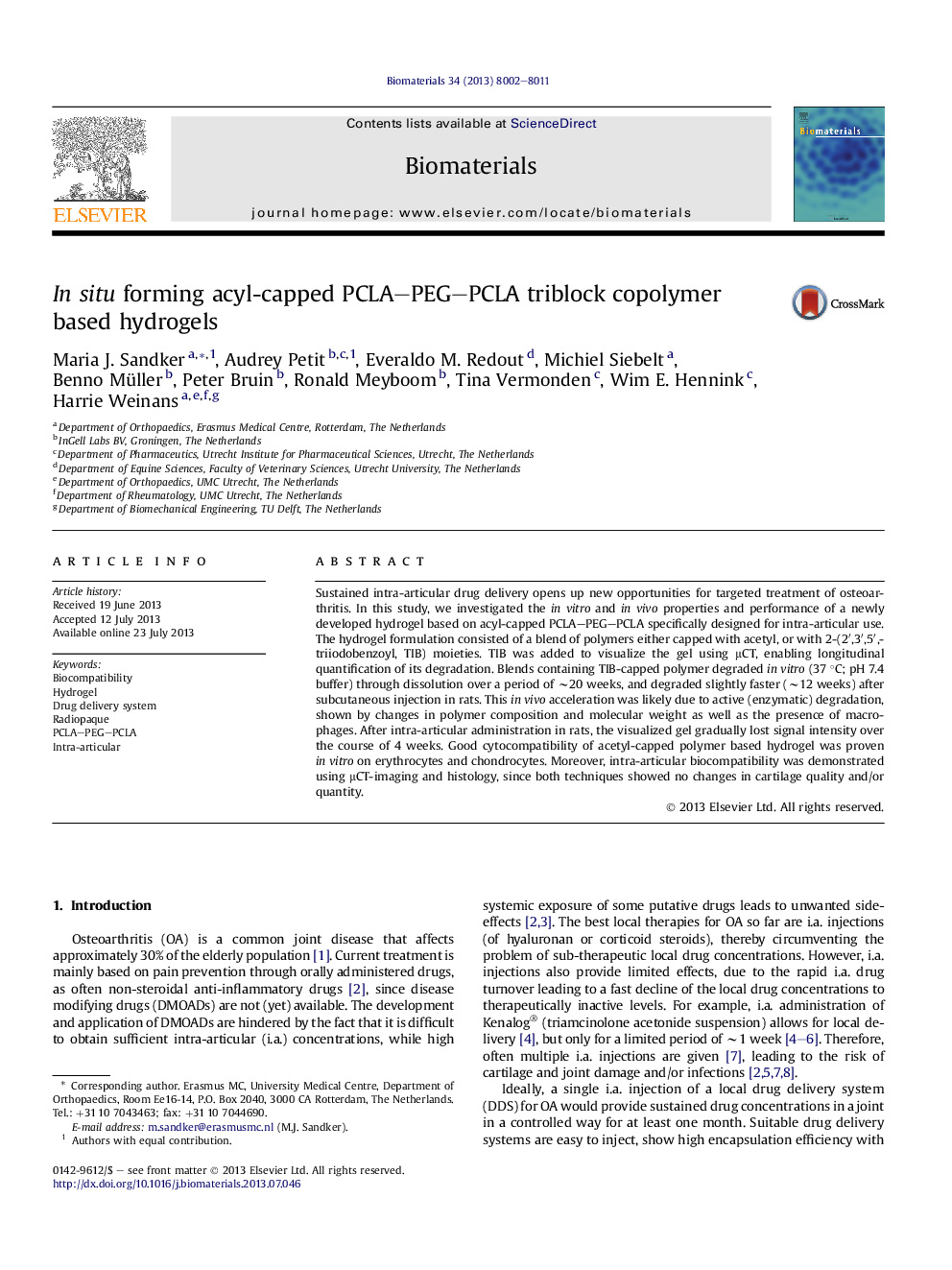| Article ID | Journal | Published Year | Pages | File Type |
|---|---|---|---|---|
| 6391 | Biomaterials | 2013 | 10 Pages |
Sustained intra-articular drug delivery opens up new opportunities for targeted treatment of osteoarthritis. In this study, we investigated the in vitro and in vivo properties and performance of a newly developed hydrogel based on acyl-capped PCLA–PEG–PCLA specifically designed for intra-articular use. The hydrogel formulation consisted of a blend of polymers either capped with acetyl, or with 2-(2′,3′,5′,-triiodobenzoyl, TIB) moieties. TIB was added to visualize the gel using μCT, enabling longitudinal quantification of its degradation. Blends containing TIB-capped polymer degraded in vitro (37 °C; pH 7.4 buffer) through dissolution over a period of ∼20 weeks, and degraded slightly faster (∼12 weeks) after subcutaneous injection in rats. This in vivo acceleration was likely due to active (enzymatic) degradation, shown by changes in polymer composition and molecular weight as well as the presence of macrophages. After intra-articular administration in rats, the visualized gel gradually lost signal intensity over the course of 4 weeks. Good cytocompatibility of acetyl-capped polymer based hydrogel was proven in vitro on erythrocytes and chondrocytes. Moreover, intra-articular biocompatibility was demonstrated using μCT-imaging and histology, since both techniques showed no changes in cartilage quality and/or quantity.
